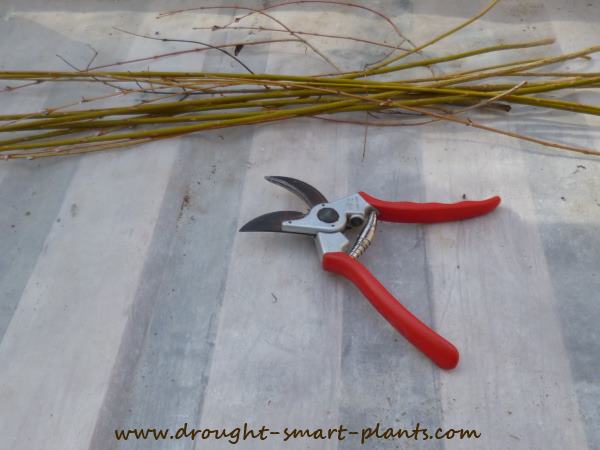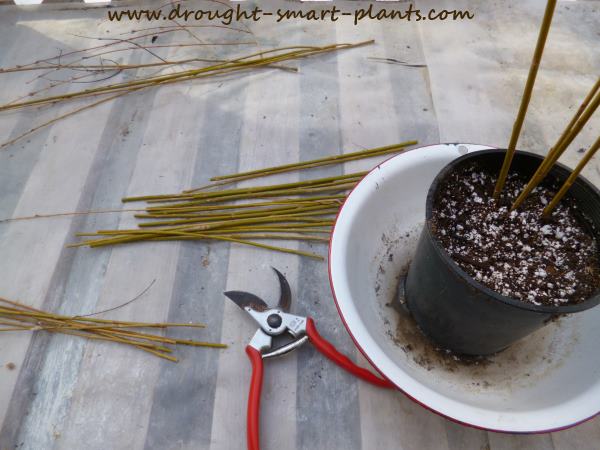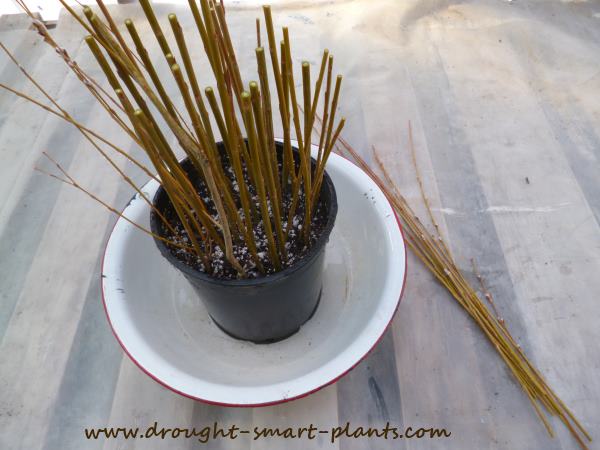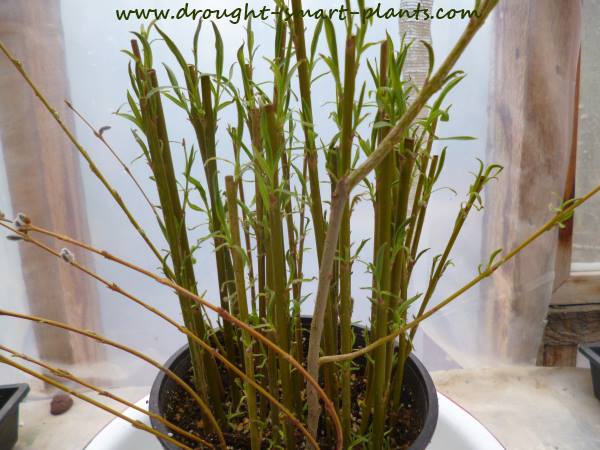Making more Salix from cuttings…
Salix, the Latin name for willows, are one of the most beautiful and varied of landscape plants. Many are the size of a tree, but there are other species and varieties which can be groundcovering, or like a small shrub.

They are often coppiced, which means to cut them back to the ground in the early spring.
The new growth shows much more vibrant color, and they are very vigorous, sometimes reaching several meters in the course of the summer.
If you’re wanting to make baskets or handmade twig wreaths, this is the method to use to get more canes with the longest growth.
Salix are incredibly easy to root; they only require one thing – water.
I’ve had good success with starting them from cuttings in very damp soil, with a one gallon pot sitting in some water in a basin.
The reason for using soil is that in straight water the roots tend to be very brittle and you may lose the plants once you put them into the garden or pot them up.

Some of the types of willows that root successfully are the smaller basket making willows.
These are such varieties as Salix ‘Hakuro Nishiki’, the variegated willow, Salix purpurea nana, the Blue Arctic willow, and Salix koryanagi ‘Rubykins’ seen here.
Willows don’t need any kind of rooting hormone; they contain their own.

The thicker the cuttings, the most chance they will have of surviving.
Too skinny and they will just shrivel and die before rooting.
Ideally, they should be at least the size of a pencil, but of course, if you are rooting the smaller species and varieties, they will be accordingly smaller in diameter.
Older wood roots well too, so if all you can find is three or four year old branches, by all means use those.
The soil used here is Sunshine Mix #4, which has a water holding polymer, and the pot will sit in the basin of water with a half an inch of water in it constantly.
The cuttings are pushed down to the bottom of the pot, so that over 4″ of the stem is in contact with the wet soil.
This enables the roots to emerge from as much of the base of the cutting as possible, to get it off to a great start.

Quite often, cuttings taken in early spring (before the snow leaves) will root quickly and start to grow at the normal time along with established plants in the landscape.
By the fall, they will be completely rooted and filling the pot, and they can be either potted into individual pots, or into their final position in the garden in a hedge or row.
Shelterbelts are made this way, giving shelter to birds, bee fodder and as a wind break.

Once you see new growth, the cuttings are most likely rooted.
With only a few tiny roots, they won’t be strong enough to sustain much top growth without special care; keep them moist, and out of direct sunlight for a few more weeks.
These took almost a month to root, so be patient.

